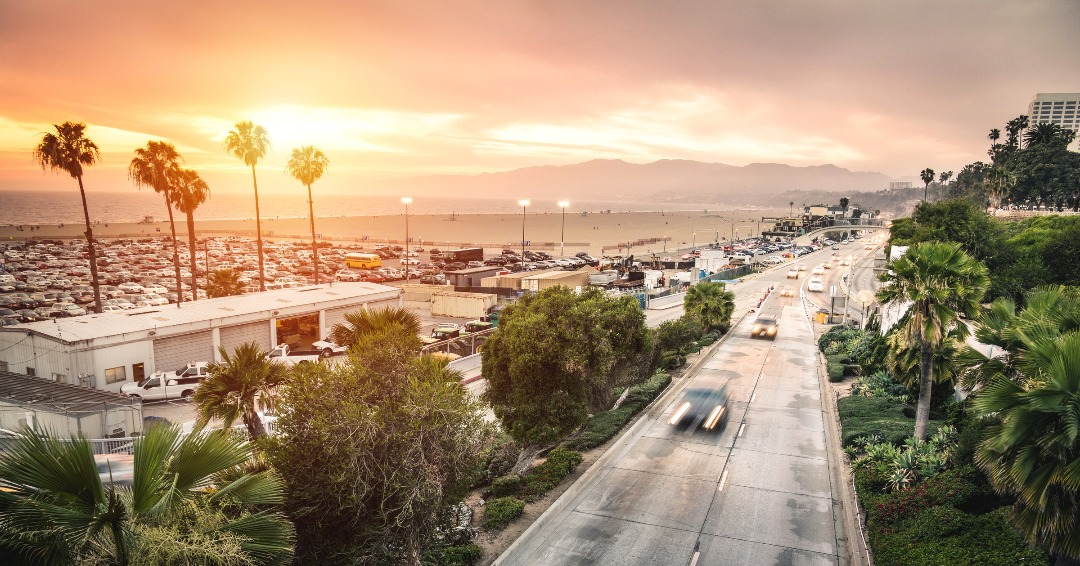
Some ideas sound extreme when first presented but acquire more credibility when you think about it, and particularly when conditions change. One of our City’s mobility goals is called Vision Zero, which is the City’s attempt to reduce our annual traffic deaths (pedestrians, bicycles, and vehicles) to zero. This is a worthy multi-year goal that, unfortunately, has become stalled. The average traffic death toll in Santa Monica has fluctuated around four deaths per year for the last dozen years. In spite of massive efforts, including school safety programs, traffic demand management, more separated bike lanes, traffic calming changes, a traffic drop during Covid, safety improvements in cars, hands-free phone technology, traffic signal changes making pedestrians more visible, etc., etc.., all have not reduced that dismal statistic for the last decade.
A static death rate
We could surmise the death rate might have been even higher had we not done all those things. In other words, our mobility improvements more or less exactly balanced out the increase in traffic hazards, so no reduction occurred. But stopping here is like accepting four deaths a year is an acceptable traffic casualty rate? Or accepting that four deaths a year in a City of about 90,000 residents may, in fact, be an irreducible number? If you accept this level of traffic mortality or believe we cannot do better, read no further.
To do better, we need to explore other approaches that might make a significant difference. Traffic mortality is always in a dynamic balance. Certain changes increase it (telephone use while driving or helmet-less scooter riders), and others decrease it (automatic braking systems on cars or increased helmet use by bike riders). So, no single credible change will get us to Vision Zero. It will take a menu of changes that we have already done and should continue doing, plus some new initiatives we should be considering.
Changing traffic Conditions
The need for new initiatives becomes even more critical when the City’s mobility mix is significantly changing. First of all, there may be a population boom of up to 20% in the next decade as developers build out the 9000 new units over the next eight years as required by Sacramento’s newly imposed 2021-2029 Housing Element. These citizens will essentially all be new wealthy or upwardly mobile residents (to afford the pricey rent charged in the new apartments). They will all still drive or try to drive cars, the most common source of traffic deaths. The vast majority of new residents will not take the train or busses because of their perceived personal danger and because they can typically afford to own cars.
Second, into this massive flow increase will be injected with an increasingly variable erratic mix of scooters, skateboards, electric bikes, motorcycles, wheelchairs, and other micro-mobility devices as the population responds to differing mobility pressures. These exposed micro-mobility devices, when mixed in with cars, typically increase fatality risk. While car use per person may go down, overall, the number of cars will go up. Aging seniors in our increasingly gray city will slowly stop driving, while others may forgo cars for ecological reasons or to get more exercise, and finally, many will not be able to or want to afford the expenses of car ownership. However, all of these visitors, residents, and workers, regardless of their mobility choices, will still need some kind of mobility device, including their shoes, which will all take up more space on the public right of way.
Because we are a built-out legacy city, our right of ways, which were laid out about 150 years ago, will not appreciably increase in size. Whether it’s bike lanes, wider sidewalks, drop-off zones, charging stations, bus lanes, or car lanes, all will need to be crammed essentially into our existing 50’ to 100’ wide right of ways. The only area where the right of way might be increased is in the future development of Airport Park. The proper insertion of traffic into that future park and development should not only provide proper safe access but must also be taken as an opportunity to solve, as much as possible, the chronic afternoon gridlock of the entire southeast quadrant (Sunset Park) of our City. This will require new intersecting cross streets linked to Venice to address the predictable increase in traffic.
Third, the advent of self-driving cars will have an unknown effect on our traffic fatalities. It is unclear whether self-driving cars will be safer, the same, or more dangerous in their eventual rollout. Unless there is a mechanical failure or hack, self-driving cars will not go over the posted speed limit nor start unless everyone has their seat belts on. This makes them safer on paper, but real-life experience will show their real impact on fatalities. This is an unknown variable, so we will need to wait and see.
Speed Kills
One of the obvious ways to reduce fatalities is to slow traffic down. On paper, our City is a 25-35 mph city, which is the typically posted speeds on our major streets. Actual speeds can be much greater (e.g., Olympic Blvd). Some streets (Main Street, west end of Broadway, etc. ) are already calmed at 25 mph. Others (Wilshire, 20th Street) are already at 30 mph. We should consider reducing the remaining 35 mph streets (e.g., Pico, Olympic, East Ocean Park) to 30 mph. 30 mph would then become Santa Monica’s default maximum speed everywhere except where otherwise posted or on PCH, on the Freeway (and its on/off ramps), and obviously for emergency vehicles. School zones would remain at 25 mph but could go down to 20 mph. Portions of other selected streets based on accident history or the presence of curbside eating might also be reduced to 25 mph.
The City should continue its traffic-calming initiatives. A slower city is a safer city. Next week, we will discuss all the benefits of a slower City and exactly how slowing traffic reduces casualties.
By Mario Fonda-Bonardi AIA
S.M.a.r.t Santa Monica Architects for a Responsible Tomorrow
Thane Roberts, Architect; Robert H. Taylor AIA, Architect; Dan Jansenson, Architect & Building and Fire-Life Safety Commission; Samuel Tolkin Architect & Planning Commissioner, Mario Fonda-Bonardi AIA, Michael Jolly, AIR-CRE.
For previous articles, see www.santamonicaarch.wordpress.com/writing























